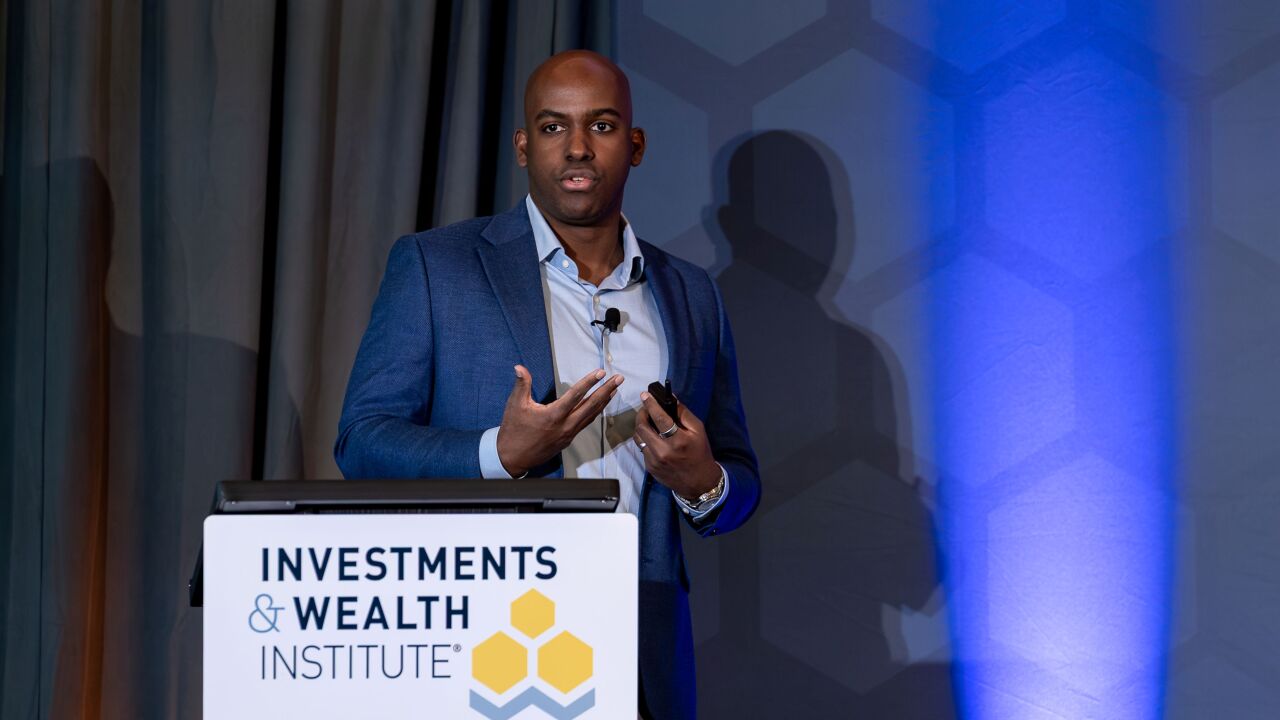Wall Street’s bond traders may abhor the lack of volatility that’s overcome markets. But their colleagues who are managing other people’s money certainly seem to like it.
Calm and climbing markets gave a boost to wealth- and asset-management arms at the largest U.S. banks, driving revenue in those units to a record $18.4 billion in the second quarter, according to data compiled by Bloomberg. Divisions at
This is what bankers had in mind in the years following the financial crisis when top executives looked to acquire or expand businesses that collect regular fees for managing the assets of the wealthy. The logic of the time was that the businesses would offset the more volatile trading units, require little capital and propel valuations.
-
The firm needs a digital advice offering for clients who don't want a traditional relationship, CEO James Gorman said.
July 19 -
The firm also said it has benefited from low attrition and its training program.
July 18 -
The firm's headcount has steadily declined since the bogus account scandal came to light last year.
July 14
“It’s really transformed our results in terms of the stability and return,”
The units have benefited from U.S. stock indexes reaching new peaks this year, as many wealth-management accounts are priced as a percentage of asset values. Performance fees have been helped by the S&P 500 rising for seven consecutive quarters. And higher interest rates have made banks’ efforts to boost lending to wealthy clients more profitable.
Sedate markets have also helped the investment-banking business, as fees from advising on mergers and selling stocks and bonds for companies rose at four of the five biggest firms.
The wealth units posted record results even as they grapple with a number of changes, including new fiduciary rules from the Department of Labor, a rise in robo advisers that seek to automate investing help and a move by many investors into passive strategies.

'EXCELLENT' PERFORMANCE
No approach was more closely watched than that of Morgan Stanley CEO James Gorman, who purchased the Smith Barney brokerage from Citigroup in an effort to lessen his firm’s dependence on trading and investment banking. Morgan Stanley’s wealth-management unit turned in record revenue and pretax margin in the second quarter as the bank’s profit jumped 11%.
Citigroup, now the only one of the six biggest U.S. banks without a major wealth or asset-management unit, was also the only lender to see firm-wide profit fall this quarter.
“It’s a strong performance considering the industry is navigating many changes, both from the customer side and the regulatory side,” Moynihan said. “Where we’ve been growing and having strong margins, we’ve been investing.”
Goldman Sachs has also made a priority of expanding its investment-management division, which accounted for 19% of the bank’s revenue last quarter. The unit posted a record $1.28 billion in management and other fees and logged its 18th straight quarter of inflows into its longer-term funds. That helped offset a 40% plunge in fixed-income trading.
The ascendancy of Goldman Sachs’s asset-management division was made clear earlier this year, when the firm built a new trading floor at its 200 West St. headquarters. The facility wasn’t for traders, who accounted for nearly half of 2016 revenue, but portfolio managers. Employees in the trading division haven’t seen such an ambitious renovation since the building opened in 2009.





